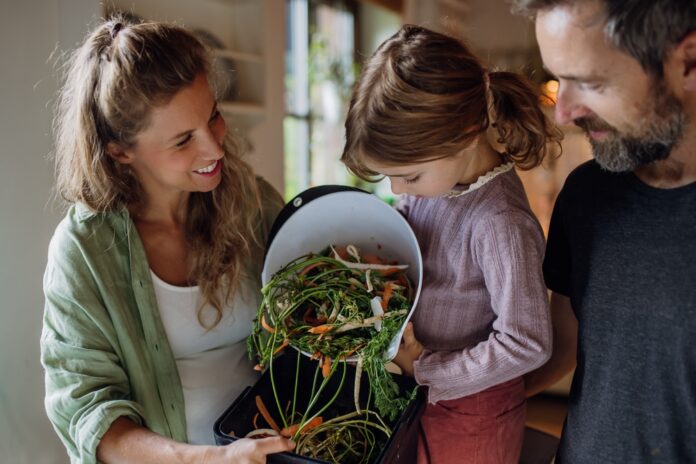Composting is an age-old practice that turns organic waste into nutrient-rich soil, often referred to as “black gold.” By creating your own compost, you’re not only reducing household waste but also enriching your garden with a natural fertilizer that’s excellent for plant health. Here’s a comprehensive guide on how to make your own compost for a sustainable garden.
Why Compost?
Composting brings numerous benefits to your garden and the environment:
- Enriches Soil: Adds essential nutrients and improves soil structure.
- Reduces Waste: Diverts kitchen and yard waste from landfills.
- Saves Money: Cuts down on the need for chemical fertilizers.
- Supports Microorganisms: Encourages beneficial bacteria and fungi in the soil.
Getting Started with Composting
Choose Your Composting Method
There are various composting methods to suit different lifestyles and spaces:
- Hot Composting: Involves actively managing the compost pile to produce compost quickly, usually within 1-3 months. It requires regular turning and monitoring of temperature. Hot composting requires maintaining temperatures between 110-160°F for rapid decomposition. This method rapidly breaks down organic material and kills most weed seeds and pathogens due to the high temperatures.
- Cold Composting: A passive method where you add organic materials to a pile and let them decompose naturally over time, usually taking about a year. It’s less labor-intensive but slower. Cold composting, at lower temperatures, is slower but more passive.
- Vermicomposting: Utilizes worms, specifically red wigglers, to break down organic matter. This is an excellent option for those with limited space or who want to compost indoors.
- Trench Composting: Involves burying organic waste directly into the soil, which decomposes over time and enriches the surrounding area.
Selecting a Location
Place your compost pile or bin in a convenient location:
- Accessibility: Easy to reach from your kitchen and garden.
- Sunlight: Both sunny and shady spots work, but full sun accelerates decomposition.
- Drainage: Ensure the area allows excess water to drain away.
- Ventilation: Good airflow aids the composting process.
Building Your Compost Pile
Gather Your Materials
Effective composting requires a balance of two types of materials:
Greens (Nitrogen-rich):
- Kitchen scraps: vegetable and fruit peels, coffee grounds, tea bags
- Fresh grass clippings
- Manure from herbivorous animals (e.g., rabbits, chickens)
Browns (Carbon-rich):
- Dry leaves
- Shredded paper or cardboard
- Straw or hay
- Small branches or twigs
A recommended ratio is about 3 parts greens to 1 part browns. This balance ensures efficient decomposition and minimizes odors.
Layering Your Compost
- Base Layer: Start with coarse browns like small branches or twigs to aid airflow.
- Alternate Layers: Add greens and browns in alternating layers.
- Moisten Each Layer: The pile should be as damp as a wrung-out sponge.
- Add Soil or Finished Compost: Introducing soil can add microorganisms to kick-start decomposition.
Manage Moisture and Airflow
- Moisture: Regularly check the moisture level. The compost should be moist but not soggy.
- Aeration: Turn the pile weekly to introduce oxygen, which speeds up decomposition and prevents odors. Aerate the pile weekly to maintain its heat and oxygen levels, enhance the decomposition speed, and avoid matting.
What NOT to Compost
Avoid adding the following to prevent pests, odors, and diseases:
- Meat, bones, and dairy products
- Fats and oils
- Pet waste from carnivorous animals
- Diseased plants or weeds with seeds
Maintaining Your Compost
Temperature Monitoring
- Use a compost thermometer to monitor the internal temperature.
- Ideal temperatures are between 130°F and 160°F for hot composting.
- Turning the pile when temperatures drop helps maintain the heat necessary for decomposition.
Troubleshooting Tips
- Bad Odors: Indicate excess moisture or lack of air. Turn the pile and add more browns.
- Dry Pile: If materials aren’t decomposing, add water to moisten the pile.
- Pests: Cover food scraps with browns and avoid attractants like meat or dairy.
Harvesting and Using Your Compost
When Is Compost Ready?
- Appearance: Dark brown, crumbly texture resembling rich soil.
- Smell: Earthy aroma without any foul odors.
- Timeframe: Can take anywhere from 1 month (hot composting) to a year (cold composting).
Applying Compost to Your Garden
- Soil Amendment: Mix into garden beds to improve soil structure and fertility.
- Mulch: Spread around plants to retain moisture and suppress weeds.
- Compost Tea: Soak compost in water to create a nutrient-rich liquid fertilizer.
Vermicomposting: Composting with Worms
If space is limited or you prefer an indoor method, vermicomposting is an excellent option.
Setting Up a Worm Bin
- Container: Use a ventilated bin with a lid.
- Bedding: Add moist shredded paper or coconut coir.
- Worms: Introduce red wigglers, which are efficient composters.
- Feeding: Add small amounts of kitchen scraps, avoiding citrus and onions.
Benefits of Vermicomposting
- Produces nutrient-rich worm castings.
- Compact and suitable for indoor spaces.
- Faster decomposition of organic waste.
Community Composting and Resources
If you lack space or resources to compost at home, consider:
- Community Gardens: Many have composting facilities.
- Municipal Programs: Some cities offer compost collection services.
- Local Workshops: Learn more and connect with other composters.
Conclusion
Making your own compost is a rewarding endeavor that benefits both your garden and the environment. By recycling organic waste into valuable fertilizer, you’re taking a significant step toward sustainability. Start small, experiment with different methods, and enjoy the process of enriching your garden naturally.
Ready to get started? Equip yourself with the essential tools and materials for composting. Check out our recommended compost bins and accessories here. Happy composting!


